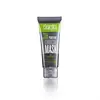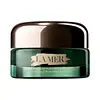What's inside
What's inside
 Key Ingredients
Key Ingredients

 Benefits
Benefits

 Concerns
Concerns

 Ingredients Side-by-side
Ingredients Side-by-side

Water
Skin ConditioningHydrated Silica
AbrasiveEthylhexyl Palmitate
EmollientPropylene Glycol
HumectantGlycerin
HumectantBentonite
AbsorbentIsoceteth-20
EmulsifyingPEG-8
HumectantPolysorbate 20
EmulsifyingXanthan Gum
EmulsifyingSodium Methyl Cocoyl Taurate
CleansingButylene Glycol
HumectantPhenoxyethanol
PreservativeSalicylic Acid
MaskingHamamelis Virginiana Water
AstringentSimethicone
EmollientParfum
MaskingSodium Chloride
MaskingDisodium EDTA
Hydroxyethylcellulose
Emulsion StabilisingCharcoal Extract
Skin ConditioningEucalyptus Globulus Leaf Extract
PerfumingCI 77491
Cosmetic ColorantCI 77492
Cosmetic ColorantCI 77499
Cosmetic ColorantWater, Hydrated Silica, Ethylhexyl Palmitate, Propylene Glycol, Glycerin, Bentonite, Isoceteth-20, PEG-8, Polysorbate 20, Xanthan Gum, Sodium Methyl Cocoyl Taurate, Butylene Glycol, Phenoxyethanol, Salicylic Acid, Hamamelis Virginiana Water, Simethicone, Parfum, Sodium Chloride, Disodium EDTA, Hydroxyethylcellulose, Charcoal Extract, Eucalyptus Globulus Leaf Extract, CI 77491, CI 77492, CI 77499
Water
Skin ConditioningBentonite
AbsorbentKaolin
AbrasiveButylene Glycol
HumectantPerlite
AbsorbentHamamelis Virginiana Water
AstringentMica
Cosmetic ColorantAlgae Extract
EmollientSilica
AbrasiveYeast Extract
Skin ConditioningPEG-100 Stearate
Charcoal Powder
AbrasiveSesamum Indicum Seed Oil
EmollientMedicago Sativa Seed Powder
Skin ConditioningHelianthus Annuus Seedcake
AbrasivePrunus Amygdalus Dulcis Seed Meal
AbrasiveEucalyptus Globulus Leaf Oil
PerfumingSodium Gluconate
Skin ConditioningCopper Gluconate
Skin ConditioningCalcium Gluconate
HumectantMagnesium Gluconate
Skin ConditioningZinc Gluconate
Skin ConditioningTocopheryl Succinate
AntioxidantNiacin
SmoothingSesamum Indicum Seed Powder
Skin ConditioningCI 77220
Cosmetic ColorantGlycolic Acid
BufferingSalicylic Acid
MaskingLactic Acid
BufferingPhytic Acid
Tourmaline
Malachite
Skin ConditioningPearl Powder
Thermus Thermophillus Ferment
Skin ConditioningCamellia Sinensis Leaf Extract
AntimicrobialCitrus Aurantifolia Peel Extract
CleansingSucrose
HumectantSpirulina Platensis Powder
Skin ProtectingTocopheryl Acetate
AntioxidantSodium Hyaluronate
HumectantCitrus Grandis Peel Oil
MaskingMaris Sal
Skin ConditioningPelargonium Graveolens Flower Oil
MaskingTrehalose
HumectantDicetyldimonium Chloride
EmulsifyingGlycerin
HumectantBis-PEG-18 Methyl Ether Dimethyl Silane
EmollientMentha Viridis Leaf Oil
AstringentCamelina Sativa Seed Oil
Skin ConditioningCaprylyl Glycol
EmollientPEG-8
HumectantSodium Polyaspartate
HumectantPolysorbate 20
EmulsifyingLecithin
EmollientSodium Methyl Cocoyl Taurate
CleansingMethyldihydrojasmonate
MaskingPropylene Glycol Laurate
Skin ConditioningPhosphatidylcholine
EmulsifyingPEG-150 Distearate
EmulsifyingHexylene Glycol
EmulsifyingPropylene Glycol Stearate
Skin ConditioningXanthan Gum
EmulsifyingJojoba Wax PEG-120 Esters
Alcohol
AntimicrobialSorbitan Laurate
EmulsifyingSodium Magnesium Silicate
Alcohol Denat.
AntimicrobialCitric Acid
BufferingParfum
MaskingCitronellol
PerfumingGeraniol
PerfumingLimonene
PerfumingLinalool
PerfumingDisodium EDTA
Potassium Sorbate
PreservativePhenoxyethanol
PreservativeCI 77288
Cosmetic ColorantCI 77289
Cosmetic ColorantCI 77499
Cosmetic ColorantWater, Bentonite, Kaolin, Butylene Glycol, Perlite, Hamamelis Virginiana Water, Mica, Algae Extract, Silica, Yeast Extract, PEG-100 Stearate, Charcoal Powder, Sesamum Indicum Seed Oil, Medicago Sativa Seed Powder, Helianthus Annuus Seedcake, Prunus Amygdalus Dulcis Seed Meal, Eucalyptus Globulus Leaf Oil, Sodium Gluconate, Copper Gluconate, Calcium Gluconate, Magnesium Gluconate, Zinc Gluconate, Tocopheryl Succinate, Niacin, Sesamum Indicum Seed Powder, CI 77220, Glycolic Acid, Salicylic Acid, Lactic Acid, Phytic Acid, Tourmaline, Malachite, Pearl Powder, Thermus Thermophillus Ferment, Camellia Sinensis Leaf Extract, Citrus Aurantifolia Peel Extract, Sucrose, Spirulina Platensis Powder, Tocopheryl Acetate, Sodium Hyaluronate, Citrus Grandis Peel Oil, Maris Sal, Pelargonium Graveolens Flower Oil, Trehalose, Dicetyldimonium Chloride, Glycerin, Bis-PEG-18 Methyl Ether Dimethyl Silane, Mentha Viridis Leaf Oil, Camelina Sativa Seed Oil, Caprylyl Glycol, PEG-8, Sodium Polyaspartate, Polysorbate 20, Lecithin, Sodium Methyl Cocoyl Taurate, Methyldihydrojasmonate, Propylene Glycol Laurate, Phosphatidylcholine, PEG-150 Distearate, Hexylene Glycol, Propylene Glycol Stearate, Xanthan Gum, Jojoba Wax PEG-120 Esters, Alcohol, Sorbitan Laurate, Sodium Magnesium Silicate, Alcohol Denat., Citric Acid, Parfum, Citronellol, Geraniol, Limonene, Linalool, Disodium EDTA, Potassium Sorbate, Phenoxyethanol, CI 77288, CI 77289, CI 77499
Ingredients Explained
These ingredients are found in both products.
Ingredients higher up in an ingredient list are typically present in a larger amount.
Bentonite is an aluminium phyllosilicate clay with great absorbent properties. The name 'bentonite' comes from the area where the largest source is found: Fort Benton, Wyoming.
As a clay, bentonite is often used to absorb excess oil and provide exfoliation. It has also been shown to have some antibacterial and anti-inflammatory properties. Studies show bentonite was effective at calming dermatitis from poison ivy and in diaper dermatitis of infants. Bentonite has also been shown to act as a barrier against toxic compounds on your skin.
Sunscreens containing bentonite display higher water resistance and stay on the skin for much longer. The sunscreens containing bentonite also show higher potency and UV light absorbtion.
Bentonite is naturally created from volcanic ash and several natural weathering/hydrothermal processes.
A common usage of bentonite is removing excess protein from white wines. Bentonite contains a property of being able to absorb large amounts of protein from aqueous solutions.
Phyllosilicate clay has a structure formed by sheets.
Learn more about BentoniteButylene Glycol (or BG) is used within cosmetic products for a few different reasons:
Overall, Butylene Glycol is a safe and well-rounded ingredient that works well with other ingredients.
Though this ingredient works well with most skin types, some people with sensitive skin may experience a reaction such as allergic rashes, closed comedones, or itchiness.
Learn more about Butylene GlycolCi 77499 is also hydrated iron III oxide. It is created from mixing red and black iron oxides. This helps give shades of darkness to a product.
Iron III oxides are classified as inorganic chemicals for coloring.
Disodium EDTA plays a role in making products more stable by aiding other preservatives.
It is a chelating agent, meaning it neutralizes metal ions that may be found in a product.
Disodium EDTA is a salt of edetic acid and is found to be safe in cosmetic ingredients.
Learn more about Disodium EDTAGlycerin is already naturally found in your skin. It helps moisturize and protect your skin.
A study from 2016 found glycerin to be more effective as a humectant than AHAs and hyaluronic acid.
As a humectant, it helps the skin stay hydrated by pulling moisture to your skin. The low molecular weight of glycerin allows it to pull moisture into the deeper layers of your skin.
Hydrated skin improves your skin barrier; Your skin barrier helps protect against irritants and bacteria.
Glycerin has also been found to have antimicrobial and antiviral properties. Due to these properties, glycerin is often used in wound and burn treatments.
In cosmetics, glycerin is usually derived from plants such as soybean or palm. However, it can also be sourced from animals, such as tallow or animal fat.
This ingredient is organic, colorless, odorless, and non-toxic.
Glycerin is the name for this ingredient in American English. British English uses Glycerol/Glycerine.
Learn more about GlycerinHamamelis Virginiana Water is made by distilling parts of the witch hazel plant. You can also call this ingredient "witch hazel water".
The name 'Hamamelis Virginiana Water' refers to the distillation product used in cosmetics. On the other hand, 'Witch Hazel' refers to the active drug ingredient.
Unless it is specified to be non-alcohol, many types of witch hazel ingredients are distilled in denatured alcohol.
Witch Hazel water is an astringent, anti-inflammatory antioxidant, and antibacterial ingredient.
It contains tannins. Tannins have a drying effect when used on skin by constricting proteins. The constriction also minimizes the appearance of pores.
Both the tannins and fragrance found in witch hazel may be skin-sensitizing.
Witch hazel water gets anti-inflammatory and antibacterial properties from its catechin and gallic acid content.
Indigenous groups have used witch hazel to help treat inflammation in North America for centuries.
Learn more about Hamamelis Virginiana WaterParfum is a catch-all term for an ingredient or more that is used to give a scent to products.
Also called "fragrance", this ingredient can be a blend of hundreds of chemicals or plant oils. This means every product with "fragrance" or "parfum" in the ingredients list is a different mixture.
For instance, Habanolide is a proprietary trade name for a specific aroma chemical. When used as a fragrance ingredient in cosmetics, most aroma chemicals fall under the broad labeling category of “FRAGRANCE” or “PARFUM” according to EU and US regulations.
The term 'parfum' or 'fragrance' is not regulated in many countries. In many cases, it is up to the brand to define this term.
For instance, many brands choose to label themselves as "fragrance-free" because they are not using synthetic fragrances. However, their products may still contain ingredients such as essential oils that are considered a fragrance by INCI standards.
One example is Calendula flower extract. Calendula is an essential oil that still imparts a scent or 'fragrance'.
Depending on the blend, the ingredients in the mixture can cause allergies and sensitivities on the skin. Some ingredients that are known EU allergens include linalool and citronellol.
Parfum can also be used to mask or cover an unpleasant scent.
The bottom line is: not all fragrances/parfum/ingredients are created equally. If you are worried about fragrances, we recommend taking a closer look at an ingredient. And of course, we always recommend speaking with a professional.
Learn more about ParfumPEG-8 is a synthetic polymer used as a humectant and solvent.
This ingredient is able to help dissolve active ingredients, including water. This gives it humectant properties.
It is soluble in water. The number '8' stands for the molecular weight of the ingredient.
Learn more about PEG-8Phenoxyethanol is a preservative that has germicide, antimicrobial, and aromatic properties. Studies show that phenoxyethanol can prevent microbial growth. By itself, it has a scent that is similar to that of a rose.
It's often used in formulations along with Caprylyl Glycol to preserve the shelf life of products.
Polysorbate 20 is made by combining ethoxylation of sorbitan, ethylene oxide, and lauric acid. It is a mild cleansing agent, surfactant, and emulsifier.
As a surfactant, it helps collect dirt and oils for washing. Emulsifiers prevent oils and water from separating.
Polysorbate 20 also adds scent to a product. Since it is made using sorbitol, it has a sweet scent. Sorbitol can also be found in fruits such as apples and peaches.
The lauric acid used to create Polysorbate 20 is often derived from coconuts.
Polysorbate 20 may not be fungal acne safe.
Learn more about Polysorbate 20Salicylic Acid (also known as beta hydroxy acid or BHA) is a well-known ingredient for treating skin that struggles with acne and clogged pores. It exfoliates both the skin's surface and deep within the pores to help clear out buildup, control oil, and reduce inflammation.
Unlike AHAs (alpha hydroxy acids), salicylic acid is oil-soluble. This allows it to penetrate into pores which makes it especially effective for treating blackheads and preventing future breakouts.
Salicylic acid is also known for its soothing properties. It has a similar structure to aspirin and can calm inflamed or irritated skin, making it a good option for acne-prone skin that is also sensitive.
Concentrations of 0.5-2% are recognized by the U.S. FDA as an over-the-counter topical acne product.
It can cause irritation and/or dryness if one's skin already has a compromised moisture barrier, so it's best to focus on repairing that before introducing this ingredient into your routine.
While salicylic acid does not increase sun sensitivity, it’s still important to wear sunscreen daily to protect your skin.
If you are looking for the ingredient called BHA or Butylated Hydroxyanisole, click here.
Learn more about Salicylic AcidThis gentle cleansing and foaming ingredient is known for leaving a smooth feeling in skin and hair. It is made using coconut oil.
According to the manufacturer, it is soluble in water and has resistance to hard water, acid, and alkali.
Due to its coconut base, it may not be Malassezia folliculitis safe.
Learn more about Sodium Methyl Cocoyl TaurateWater. It's the most common cosmetic ingredient of all. You'll usually see it at the top of ingredient lists, meaning that it makes up the largest part of the product.
So why is it so popular? Water most often acts as a solvent - this means that it helps dissolve other ingredients into the formulation.
You'll also recognize water as that liquid we all need to stay alive. If you see this, drink a glass of water. Stay hydrated!
Learn more about WaterXanthan gum is used as a stabilizer and thickener within cosmetic products. It helps give products a sticky, thick feeling - preventing them from being too runny.
On the technical side of things, xanthan gum is a polysaccharide - a combination consisting of multiple sugar molecules bonded together.
Xanthan gum is a pretty common and great ingredient. It is a natural, non-toxic, non-irritating ingredient that is also commonly used in food products.
Learn more about Xanthan Gum